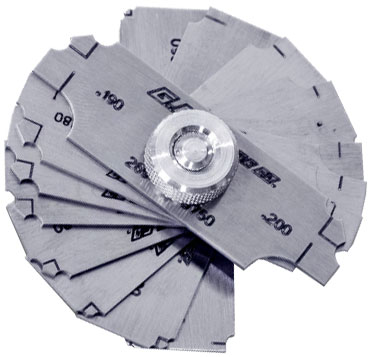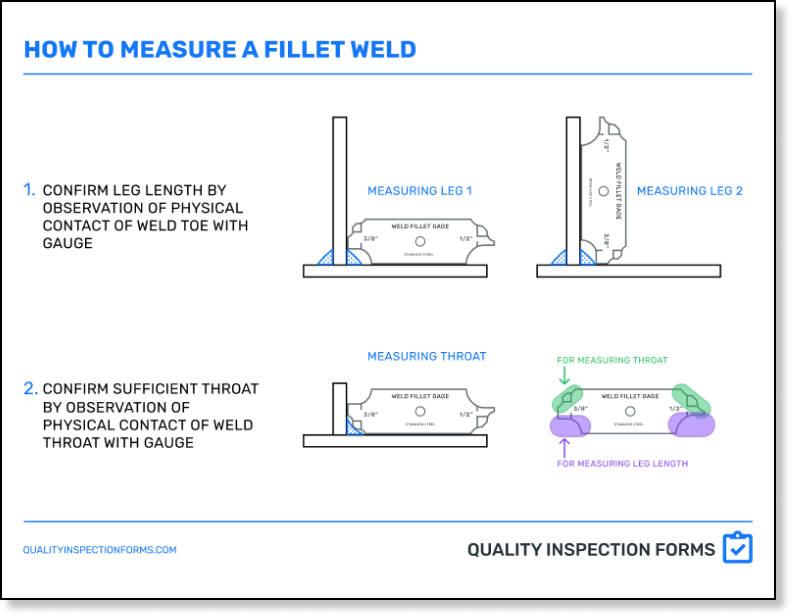Discovering the Advantages of Fillet Welding in Manufacture: Cost-effective Solutions for Diverse Industries
In the realm of manufacture, the use of fillet welding provides a compelling proposal for markets seeking cost-efficient services without compromising architectural stability. The advantages of fillet welding expand beyond simple financial cost savings to incorporate boosted structural effectiveness, convenience across diverse industrial applications, and the assurance of superior strength and longevity. As we browse with the practical advantages that fillet welding deals, a much deeper understanding emerges of exactly how this welding strategy can reinvent manufacture processes across numerous sectors.

Cost-efficient Solution for Fabrication
Fillet welding functions as a cost-efficient solution in fabrication procedures, offering both effectiveness and longevity. This welding method includes signing up with 2 pieces of steel at an angle, developing a triangular cross-section. The simpleness of fillet welding makes it a popular selection in numerous sectors, consisting of construction, auto, and production.
Among the vital advantages of fillet welding is its capacity to lower material and labor costs. By using fillet welds rather than various other intricate joint designs, manufacturers can save cash on products and manufacturing time. Additionally, fillet welding calls for marginal prep work contrasted to various other welding techniques, even more decreasing fabrication expenses.
Additionally, fillet welds supply excellent structural toughness, ensuring the durability and toughness of the produced elements. The triangular shape of the weld distributes stress and anxiety much more uniformly, lowering the likelihood of joint failing (Gauge Fillet Weld). This architectural integrity not only boosts the overall quality of the completed item however also lowers repair and maintenance prices over time
Enhanced Architectural Effectiveness With Fillet Welding
Enhancing structural effectiveness via the application of fillet welding methods is an important facet of guaranteeing optimum efficiency and toughness in produced frameworks. Fillet welding plays a key function in enhancing architectural effectiveness by properly distributing tons and stress and anxieties throughout the welded joints. By developing a smooth transition between the linked elements, fillet welds assist to enhance the total toughness and security of the framework.
Among the considerable advantages of fillet welding in boosting architectural performance is its capacity to sign up with materials of varying densities. This flexibility enables for the construction of lightweight structures without jeopardizing on strength. Additionally, the smooth profile of fillet welds decreases anxiety concentrations, which can assist prevent early failure of the bonded joints.
Moreover, fillet welding enables the fabrication of intricate geometries effortlessly, providing developers with more liberty in developing efficient and innovative structures. By enhancing the layout and positioning of fillet welds, designers can optimize the architectural efficiency of fabricated components, inevitably resulting in cost financial savings and improved efficiency in varied sectors.
Versatility in Diverse Industry Applications
With its capacity to satisfy a vast array of material densities and geometric complexities, fillet welding stands as a versatile fabrication method that finds applications throughout varied industries. One vital location where fillet welding succeeds is in the production field, where it is utilized in the production of hefty equipment, tools, and architectural elements. The auto sector likewise takes advantage of fillet welding, using it in the assembly of lorry frames, framework, and other vital frameworks. In the building area, fillet welding plays an essential function in signing up with steel beams, columns, and other structural aspects. In addition, the aerospace market relies upon fillet welding for the manufacture of airplane parts, making sure toughness and resilience in essential parts. In addition, the oil and gas field makes use of fillet welding in the building and construction of pipes, platforms, and tank, where the durable welds give honesty and durability to these frameworks. Overall, the versatility of fillet welding makes it an indispensable process in different industries, supplying cost-effective remedies for complicated fabrication needs.

Superior Toughness and Resilience
When considering welding techniques for making structures that require outstanding strength and longevity, the focus moves towards methods that can regularly supply superior stamina and longevity. Fillet welding plays a vital function in attaining these characteristics as a result of its ability to provide substantial toughness by dispersing loads evenly throughout the bonded joint. This welding method creates a triangular cross-section that boosts the weld's resistance to various sorts of stress, consisting of stress, compression, and shear pressures. Consequently, structures produced utilizing fillet welds display increased toughness and can endure considerable mechanical forces without compromising their stability - Gauge Fillet Weld.
The premium toughness and longevity offered by fillet welding make it an ideal option for applications in sectors such as construction, automobile, aerospace, and production, where structural integrity is critical. By utilizing fillet welds in fabrication, engineers and makers can make certain that their products fulfill strict high quality and safety and security criteria while enhancing cost-effectiveness and production effectiveness. In significance, the outstanding strength and durability provided by fillet welding make it a recommended welding method for developing durable and resilient frameworks throughout diverse industries.
Practical Benefits of Fillet Welding
Provided the demonstrated premium strength and resilience in bonded joints, the functional benefits of fillet welding prolong beyond structural honesty to this contact form incorporate efficiency and cost-effectiveness in manufacture procedures. Additionally, fillet welding enables for increased productivity due to its adaptability in signing up with various kinds of thicknesses, materials, and forms. Overall, the sensible advantages of fillet welding make it a valuable selection for companies seeking affordable and reliable remedies in construction.
Verdict
In final thought, fillet welding provides an affordable option for fabrication, giving improved architectural efficiency, flexibility in diverse market applications, premium toughness, and sturdiness. The useful benefits of fillet welding make it a favored his comment is here choice for different construction tasks across different markets. Its ability to efficiently sign up with materials while preserving architectural integrity makes it a beneficial technique for ensuring reliable and premium cause welding applications.

Furthermore, fillet welding calls for minimal prep work contrasted to various other welding strategies, even more reducing construction expenses.

Provided the demonstrated superior stamina and longevity in bonded joints, the practical benefits of fillet welding extend past architectural honesty to incorporate efficiency and cost-effectiveness in fabrication processes - Gauge Fillet Weld.In final thought, fillet welding provides an affordable solution for fabrication, supplying improved structural performance, adaptability in varied sector applications, review premium toughness, and longevity